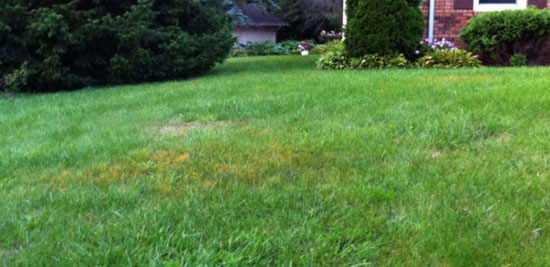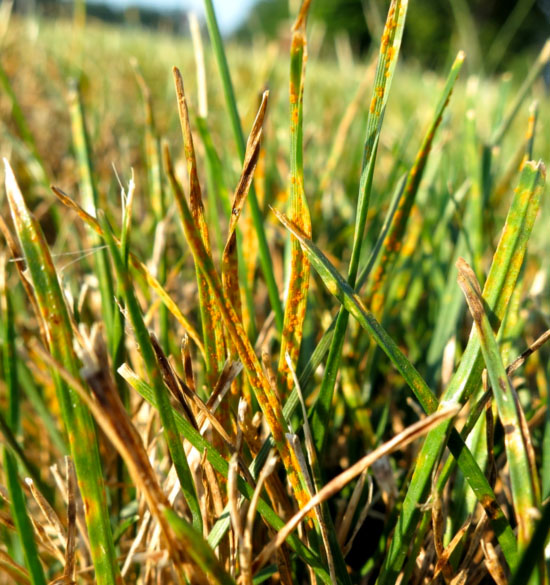Issue 13, October 8, 2021
Turfgrass Rust
Turf rust outbreaks are commonly seen late summer to early fall as moderate temperatures and long evening dew periods occur. Rust diseases are most severe on slow-growing turf stressed by drought, summer heat, low-fertility, shade, or compaction. From a distance, severely infected turf appears thin and tinted yellow, red, or brown (Photo 1). Closer inspection will reveal individual blades with numerous yellow-orange pustules (Photo 2). Orange spores produced within these pustules easily transfer to shoes, pets mowers, or anything that contacts the rust-affected grass. While harmless, the spores can be a nuisance.
Rust mostly causes aesthetic damage to established turfgrass. The disease can often be sufficiently contoled using a variety of cultural practices. Start by appling supplemental fertilizer to problematic areas to help stimulate growth and allow the turf out-grow the rust’s relatively slow infection cycle. Mowing actively growing turf on a regular basis will remove infected tissues before they become problematic. Irrigation may also be needed to reduce drought stress. However, it is important to water early in the day to allow time for the turf to dry before night. If rust is an annual occurance, consider overseeding or reseeding with a turfgrass cultivar known to have a high resistance to rust diseases. Several fungicides are available and effective against rust. However, they are usually not warranted on established turf.

Photo 1. Turfgrass affected by rust

Photo 2. Close-up view of turf blades with rust pustules.
Author:
Travis Cleveland